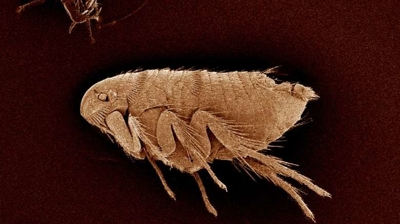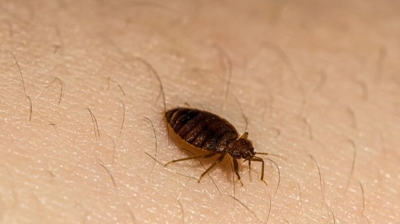
Squash Bug Control Services

Are Squash Bugs Harmful?
Squash bugs (Anasa tristis) can be considered harmful in several ways, primarily to garden crops, especially those in the squash family (Cucurbitaceae), such as pumpkins, zucchini, cucumbers, and squash. Their impact is both direct, through feeding, and indirect, through plant stress and disease facilitation:
Feeding Damage
- Sap sucking: Squash bugs feed on the sap of plants using piercing-sucking mouthparts. This deprives the plant of essential nutrients.
- Wilting: Their feeding causes yellowing and wilting of leaves, often starting at the edges and progressing inward.
- Necrosis: Heavy infestations can lead to brown or black patches where the tissue dies.
- Stunted growth: Young plants are especially vulnerable; heavy feeding can stunt growth or even kill seedlings.
Reduced Yield
- Fruit damage: While they feed mostly on leaves and stems, the overall weakening of the plant can reduce flowering and fruit production.
- Indirect impact on fruit quality: Stress from heavy feeding can lead to smaller, less healthy fruits.
Transmission of Plant Pathogens
- Squash bugs can vector bacterial pathogens, including Cucurbit yellow vine disease caused by Serratia marcescens. Infected plants may wilt and die more quickly.
Overwintering and Persistence
- Squash bugs lay eggs on the undersides of leaves. These eggs hatch into nymphs that continue the feeding cycle.
- Adults can overwinter in plant debris, soil, or nearby areas, leading to recurring infestations year after year if not controlled.
Difficulty of Control
- Squash bugs can be highly resilient; their eggs and nymphs are sometimes hard to reach with chemical or mechanical treatments.
- Heavy infestations can overwhelm casual gardeners, requiring careful monitoring and management.
Squash bugs are harmful because they stress plants, reduce yield, may transmit disease, and are persistent, making them a significant pest for home gardens and commercial squash production.
Squash Bug Control
Squash bugs can be particularly troublesome for gardeners because they feed on squash, pumpkins, zucchini, and related plants, weakening or even killing them. Homeowners can use a combination of cultural, mechanical, and chemical strategies to manage them effectively. Here’s a step-by-step approach:
Identify and Monitor Early
- Look for signs: Squash bugs are grayish-brown with flat bodies, about 5/8 inch long. They often cluster on the undersides of leaves and at stem joints. Eggs are copper-colored and laid in neat rows on the undersides of leaves.
- Inspect plants daily: Early detection is critical. Squash bugs reproduce rapidly, so finding eggs or small nymphs early makes control much easier.
Mechanical Control
- Handpicking: Remove adult squash bugs and nymphs by hand. Drop them into a bucket of soapy water to kill them. Focus on early morning or evening when bugs are less active.
- Egg removal: Scrape off eggs from the underside of leaves and destroy them. Even removing one cluster can reduce future populations.
- Trap barriers: Place boards or cardboard near plants. Bugs will hide under them at night, making collection easier.
- Row covers: Use lightweight garden fabric over young plants to prevent adult bugs from laying eggs. Remove covers once plants start flowering to allow pollination.
Cultural Practices
- Plant timing and rotation: Plant squash and pumpkins later in the season to avoid peak squash bug populations. Rotate crops yearly. Avoid planting squash or related plants in the same spot where you had infestations.
- Weed and debris control: Remove weeds, old plant debris, and fallen fruit, which can harbor squash bugs over winter.
Organic & Chemical Controls
- Neem oil: Effective against nymphs. Spray the undersides of leaves weekly, following product instructions.
- Insecticidal soaps: Target nymphs rather than adults, applied thoroughly on leaves.
- Diatomaceous earth: Dust around the base of plants to deter crawling adults.
- Chemical insecticides: If the infestation is severe, products containing pyrethrins, bifenthrin, or permethrin can be used. Follow label directions carefully, and avoid spraying during bloom to protect pollinators.
Encourage Natural Predators
- Beneficial insects: Ladybugs, tachinid flies, and parasitic wasps can reduce nymph populations.
- Birds: Some birds eat squash bugs, so creating a bird-friendly garden can help naturally.
Regular Maintenance
- Inspect plants frequently, especially during hot, dry weather when squash bugs are most active.
- Continue handpicking and removing eggs throughout the growing season.
Squash bugs are hardest to control once adults lay eggs and nymphs develop. Early detection and consistent effort are key. Combining multiple strategies—handpicking, cultural controls, and targeted treatments—is far more effective than relying on one method alone.
What Do Squash Bugs Look Like?
Squash bugs are fairly distinctive insects, especially if you’re trying to identify them in a garden. Here’s a detailed description:
- Size and Shape: Adult squash bugs are about 5/8 inch (15–20 mm) long and roughly 1/3 inch wide. They have a flat, shield-shaped body which makes them look a bit like small cockroaches.
- Color: Adults are generally brown to gray, with lighter brown or gray patterns on their backs. Young squash bugs (nymphs) are smaller and bright green or grayish-white, often with darker markings as they develop.
- Wings: Adults have wings that lie flat on their back, forming a triangular shape in the middle. They are capable of flying short distances but usually crawl on plants.
- Antennae and Legs: They have long, segmented antennae and six legs, which are brown and slightly spiny.
- Nymphs: Early-stage nymphs are small, bright green, and may cluster together. As they grow, they darken and develop the same flattened, shield-shaped body as adults.
- Signs of Infestation: Even if you don’t see the bugs immediately, look for yellowing leaves, wilted plants, and small black droppings—these are common signs of squash bug feeding damage.
Where Are Squash Bugs Found?
Squash bugs are closely tied to certain plants, so where you find them largely depends on what’s in your garden or yard:
Preferred Locations
- Cucurbit Plants: Squash bugs primarily target plants in the cucurbit family, including squash, pumpkins, zucchini, cucumbers, and gourds. They feed on the sap of leaves and stems.
- Garden Beds: They are most often found on the undersides of leaves, where they hide during the day. Look especially under large, broad leaves like those of zucchini or pumpkin.
- Along Stems and Vines: Adults often gather along stems and leaf joints. Nymphs may cluster near leaf veins or the crown of the plant.
- Under Debris: Outside of the plants themselves, squash bugs can hide under mulch, garden debris, or boardsnear infested plants, particularly at night or when temperatures are high.
Seasonal Patterns
- Squash bugs emerge in late spring to early summer, when cucurbits are growing actively.
- Adults overwinter in protected areas like garden debris, leaf litter, or under boards, so the same spots may harbor them year to year.
Tips for Spotting
- Check young plants first, as squash bugs often attack tender growth.
- Look for clusters of nymphs, which are easier to spot due to their bright green color.
- Inspect plants early in the morning or late in the evening, when the bugs are more active.
What Do Squash Bugs Eat?
Squash bugs are plant-feeding insects that specifically target plants in the cucurbit family. Here’s what they eat:
Primary Food Sources
- Leaves: Squash bugs primarily feed on the sap of leaves, using their piercing-sucking mouthparts to extract plant fluids. This feeding causes yellowing, wilting, or browning of the leaves, especially around the edges.
- Stems and Vines: They also feed on the stems and vines, which can weaken the plant and reduce its ability to transport water and nutrients. Severe feeding may even cause the plant to collapse.
- Fruits (occasionally): While they mainly go for leaves and stems, heavy infestations can sometimes lead them to feed on developing fruits, causing scarring or deformities.
Feeding Behavior
- Both nymphs and adults feed on the plant sap.
- Nymphs often cluster in groups and can cause concentrated damage in one area.
- Adults tend to spread out more but still prefer the same cucurbit plants.
Indirect Damage
- Their feeding can also introduce plant pathogens, and the stress they cause may reduce overall crop yields.
- Squash bugs live off the sap of cucurbit plants, mainly targeting leaves and stems, which can seriously harm the plant if infestations aren’t controlled.
Squash Bug Life Cycle
The life cycle of squash bugs is important to understand for effective control because it determines when and how infestations develop:
- Overwintering Adults: Adult squash bugs survive the winter in protected areas like garden debris, leaf litter, under boards, or in cracks near your garden. They become active in spring when temperatures rise, emerging to find host plants.
- Egg Laying: After emerging, females lay clusters of small, bronze or copper-colored eggs on the undersides of leaves, usually along the veins. Each female can lay 50–200 eggs over several weeks. Eggs are arranged in neat rows, which makes them relatively easy to spot.
- Nymph Stage: Eggs hatch in 7–10 days, releasing nymphs. Nymphs are small, bright green, often with black markings, and they cluster near each other. Nymphs go through five instar stages (molts), gradually darkening and growing larger with each stage. This stage lasts about 4–5 weeks, during which they feed heavily on plant sap.
- Adult Stage: After the final molt, nymphs become winged adults, brownish-gray in color and shield-shaped. Adults feed on the same plants as nymphs and continue to reproduce. In most regions, there is one full generation per year, though in warmer climates, two generations may occur.
Understanding this cycle is key: control measures are most effective against nymphs, because adults are tougher and more mobile, and eggs are protected on the leaf underside.

Hear From Our Happy Customers
-
"Professional & Considerate"
I’m pleased with Miche services. Jarvis came today. Professional and considerate. Thank you!
- Judy B. -
"Very Knowledgeable"
The tech that arrived was courteous, professional, and very knowledgeable. He was Great.
- Uerial I. -
"Great Communication"
Tech was on time, communication was great, and he accommodated my needs.
- Alonzo W. -
"Wonderful Service"
Wonderful service. Jarvis is great. Took care of everything I needed. Thank you!
- Henry P. -
"Exceeds Expectations"
I can’t say enough positive things about this company... The tech that came out, Jarvis went above and beyond my expectations. Thank you guys, I will continue using your services.
- Jake M. -
"Fantastic & Patient"
Jarvis was fantastic and patient. He answered my questions with an in-depth explanation and addressed all of my areas of concern. Would love for him to be my assigned tech going forward. Well done!
- Yonnette M.



